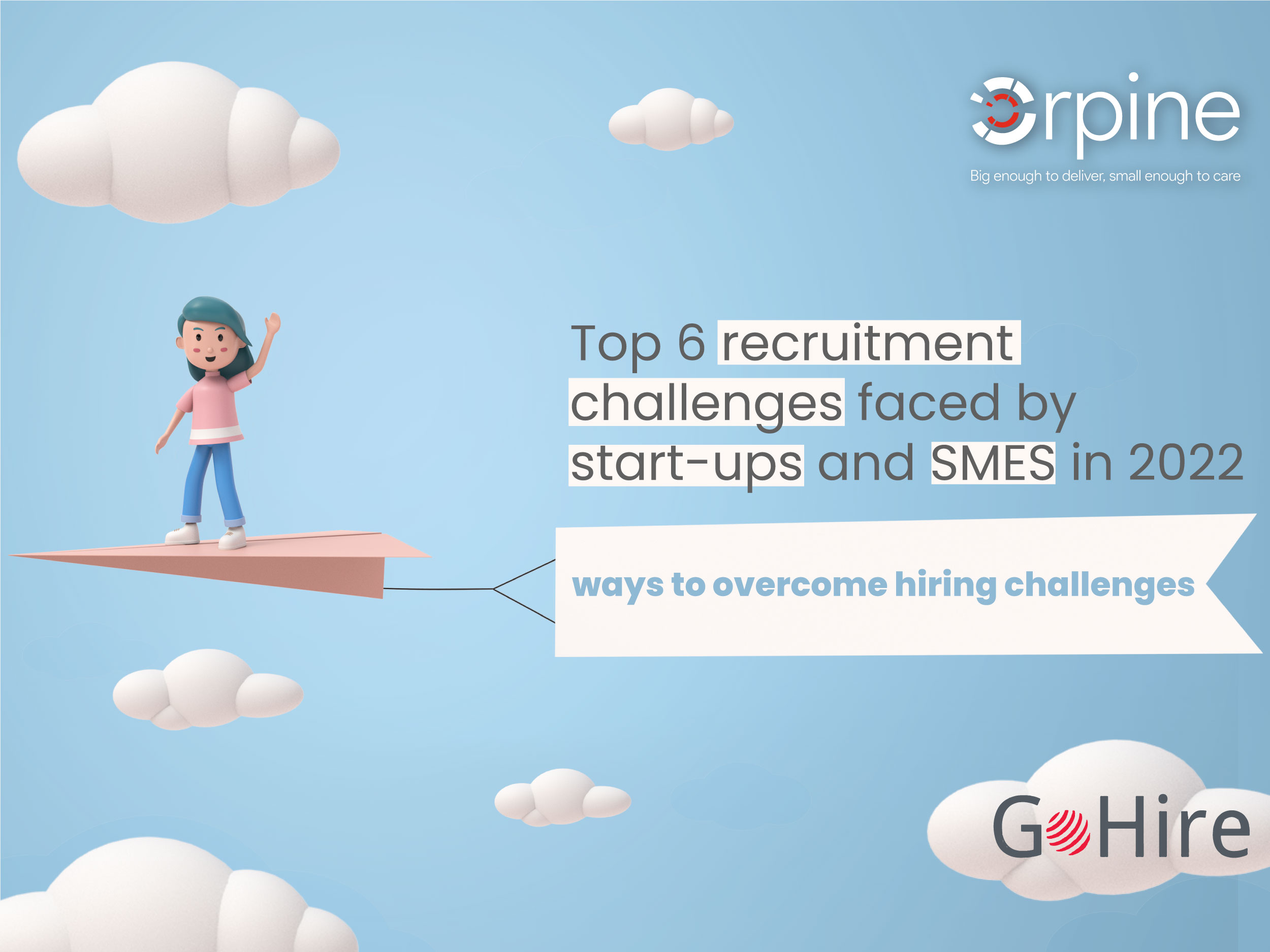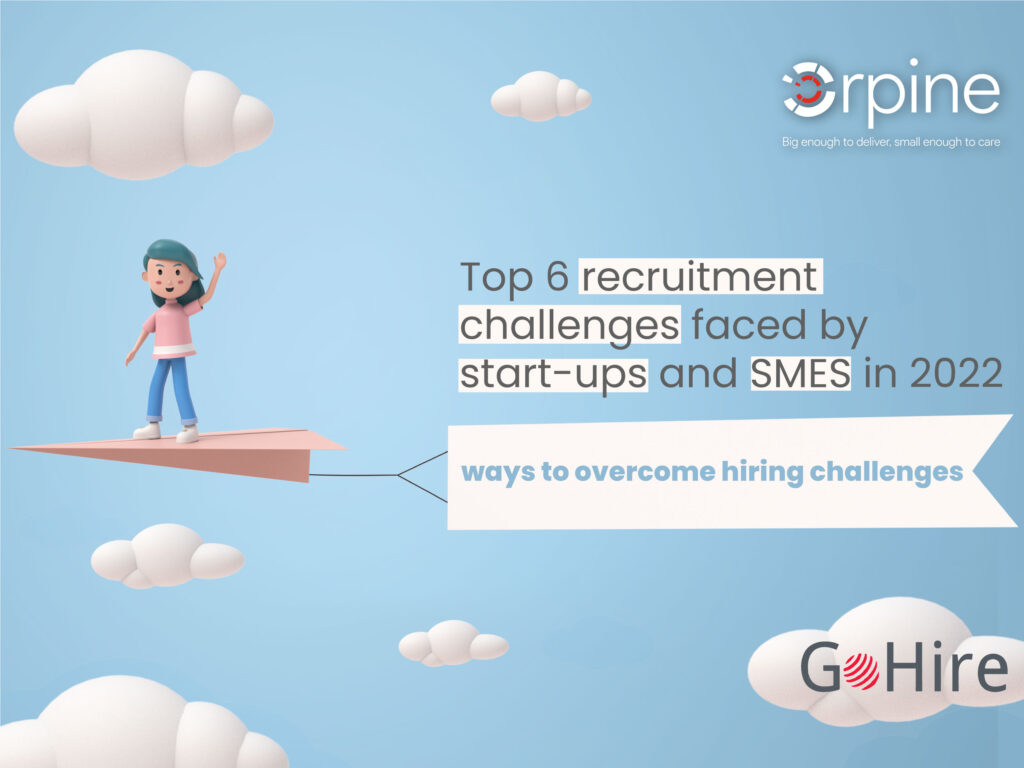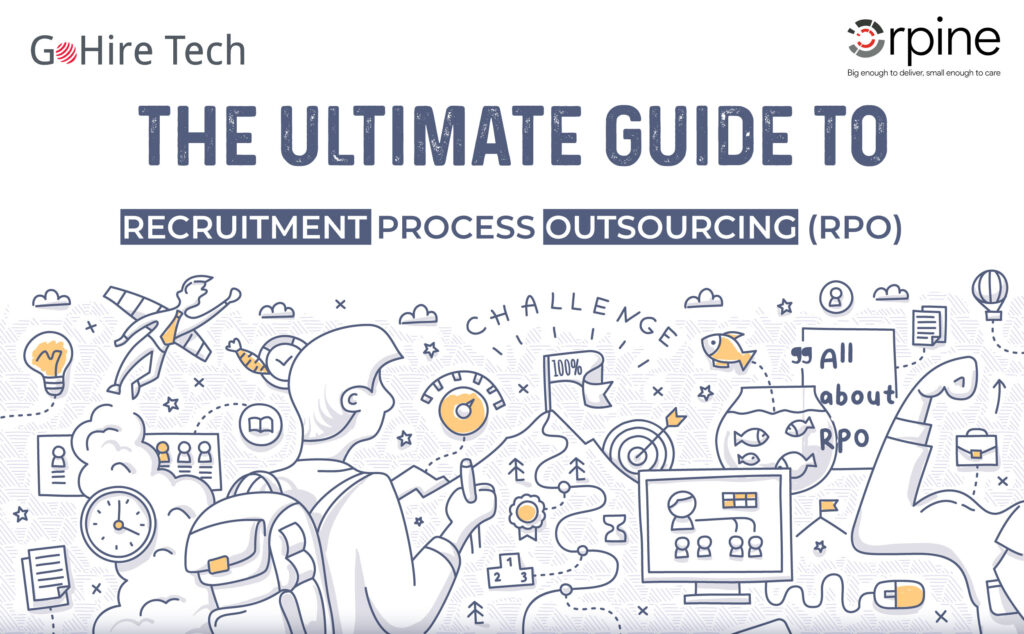Most common recruitment challenges faced by SMES and Start-ups and best ways and practices to overcome it.
Finding it challenging to attract and hire quality talent for your company? Trust me, you’re not alone.
Recruiting and retaining the right talent are two key factors that set a large company apart from a small one. The inability to fill vacancies for an extended period harms the company’s reputation and becomes a recurring issue. Look no further if you’re a recruiter struggling with your company’s hiring strategy. This article discusses the most pressing hiring issues and how to deal with them.
Challenges in Recruitment process
-
- Streamlining the hiring process
- Establishing a strong employer brand
- Building the talent Pool
- Poor applicant tracking system (ATS)
- Ensuring a good candidate experience
- Lack of assessment tool
-
Streamlining the hiring process
One of the key challenges is creating an efficient selection process. The recruitment process can be tricky, so it is mandatory to have an efficient recruiting process to hire the right talent. Hiring teams have to communicate proficiently and fast to easily evaluate candidates, and they should be aware of all the steps during the process. Their main task is to coordinate all this communication, which is not always easy. Also, administrative tasks take up too much time that they can use in the hiring process instead and provide a good candidate experience.
Tips:
-
- Prepare detailed job role and description
- Define the entire interview process into a number of steps
- Plan the evaluation process before reaching the candidates
- Be clear about whose decision it is
- Avoid delays in communication
-
Establishing a strong employer brand
‘Employer brand’ is a significant tech hiring challenge that most of the companies face. When they first start out, most businesses lack the awareness of the necessary PR and recognition. Candidates are more likely to choose a tech giant over you if they don’t know who you are or what your company does, even if you can offer better terms and more exciting work and culture.
A strong employer brand can help you attract and retain top tech talent. Employer branding investments increase the likelihood of quality hiring by threefold. However, it is a complicated process that includes everything from providing a positive candidate experience to promoting your culture on social media. It is a continuous, collaborative effort that requires you to step outside your usual responsibilities and secure buy-in from your colleagues.
Tips:
-
- Always respond promptly to online reviews to both good and bad
- Encourage employees to give genuine reviews on platforms like Ambitionbox and Glassdoor
- Sharing your coworkers/ employees achievements over social media can gain a good online reputation for your brand
- Keep your career page updated. The goal is to demonstrate to applicants how the company can aid in their search for purpose and career advancement
- Tell your company accomplishments/ achievements through blogs and videos
- Define and communicate employee value proposition
- Create a meaningful onboarding process and share it on social media.
- Make your employees your brand ambassadors by allowing them to share their experience on your company web-pages, social media and blogs
-
Building the talent pool
Talent pool is a collection of applicants you’ve already engaged who may fill open positions at your company in the future. As a result, you’ll have qualified, pre-screened candidates waiting in line when a position opens, which can help you cut down on hiring time and recruiting expenses. A major challenge here is to pool and maintain the profiles of the candidates who are interested in joining your company.
Tips:
-
- Update your careers page with most recent opening
- Promote your careers page over social media to receive quality profiles
- Organize the profiles to make use of them whenever required
- Try using applicant tracking system to build and manage profiles
-
Poor applicant tracking system (ATS):
Driving an effective recruitment strategy relies heavily on a company’s ability to implement more streamlined and agile processes, allowing recruiters to focus and spend more time on what’s truly important: Engaging the top talent.
Applicant tracking systems can improve the overall hiring process and solve some of the key pain points in recruiting and talent acquisition.
Key benefits of ATS:
-
- Creating Job listings
- Jobs published on job boards, website, and social media
- Receive job applications and profiles
- Review and shortlist the profiles
- Manage candidate database
- Stay on top of the Full Life Cycle recruitment process
-
Ensuring good candidate experience:
Good candidates always expect the great interview experience. As per research conducted by LinkedIn, 65% of candidates say a bad interview experience makes them lose interest in the job.
There are several ways to ensure a great interview experience for candidates. According to LinkedIn research, job responsibilities are the first thing applicants want to find out during a job interview. So make sure to provide details and answer all of their questions.
Keep the candidates engaged with a specific time frames for when they can hear from you again, and provide them with frequent updates, so they know you are still thinking of them. In such cases, if you choose to release the offer, it will improve their opinion of your business and increase the likelihood that they will accept your offer.
In fact, most of my clients appreciate the way my team invests time in developing good rapport, and building friendly bonds with the candidates. This keeps the candidates in anticipation and increases chances of them joining our clients when the offer is rolled out. Even otherwise, they are happy to engage with us and look up to us for other relevant opportunities.
Tips:
-
- Communicate the company values, culture, role, and growth opportunities
- Always respond on time
- Respond politely
- Avoid delays in scheduling the interview
- Keep the candidate informed about the status
-
Lack of assessment tool:
Tools like e-Assessment can help you create the best candidate assessment experience. These tools make it simple to compare candidates objectively, assisting you in minimizing any bias that may enter your hiring procedure.
Conclusion:
Your hiring experience is the driving force that shapes the company future. By overcoming the above recruitment challenges, you set rigorous standards your business needs to remain competitive in today’s market.
These recruitment challenges in 2022 can be solved by investing in technology such as Candidate Tracking Systems (ATS), assessment tools, HRMS, and building recruiting teams to facilitate quality recruitment. Recruitment process outsourcing (RPO) companies can also help you overcome key challenges such as establishing an employer brand, streamlining the hiring process, and providing the best candidate experience.
All the aforementioned advices boils down to this: when developing recruitment strategies, the major focus should be on providing the best candidate experience and make him feel to join your company over your competitor… However, what has worked for others might not be appropriate for you. As a result, you need to pay close attention to how unique your business is and what special measures it takes to be successful.











